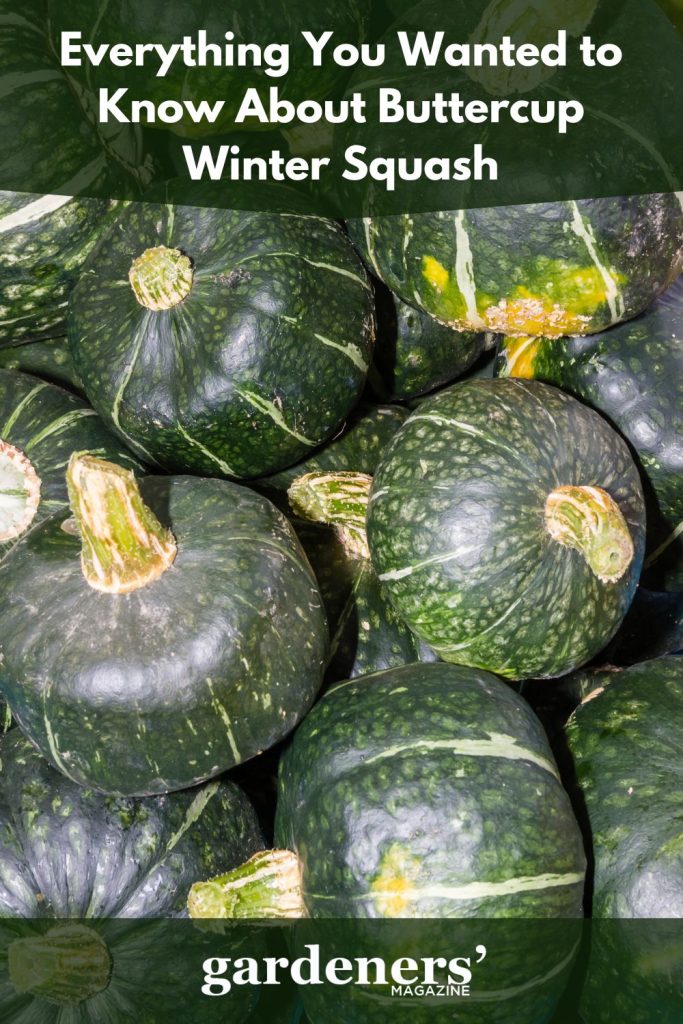Winter squash, also known as “hard squash,” is a versatile and nutritionally rich food that comes in many shapes, sizes and colors. Buttercup winter squash is one of the most popular varieties available on the market today. Its mild flavor, sweet-tasting flesh and beautiful deep orange color make it a favorite among chefs, cooks and home gardeners alike. Let’s explore the history, flavor profile, health benefits, seasonality and cultivation of buttercup winter squash.
History and Origin of Buttercup Winter Squash
Buttercup winter squash is native to Central America and has been cultivated since ancient times. Its deep orange color is due to carotenoids that are naturally present in the fruit. The term “buttercup” refers to the shape of the squash, which is often round and has a small button-shaped cap on one end.

Description of Buttercup Winter Squash
Buttercup winter squash is a member of the Cucurbitaceae family and looks like a large pumpkin with its deep orange skin. Inside, the flesh is bright yellow or orange and has a creamy texture. Its flavor is mild and sweet, with notes of honey and nutmeg.
Flavor Profile of Buttercup Winter Squash
Buttercup winter squash has a mellow, sweet flavor that makes it perfect for savory dishes as well as desserts. Its creamy texture means it can be mashed or pureed easily to make soups, stews and sauces. It pairs particularly well with ginger, cinnamon, nutmeg and other sweet spices.
Health Benefits of Buttercup Winter Squash
Buttercup winter squash is an excellent source of vitamin A, which helps support healthy vision and boosts the immune system. It’s also high in fiber and low in calories—a great way to fill up without filling out! Additionally, buttercup winter squash is a good source of potassium, which helps control blood pressure.
Seasonality and Availability Throughout the Year of Buttercup Winter Squash
Buttercup winter squash is available year-round in most areas, with peak season running from October through February. It’s at its sweetest when harvested after the first frost.
Cultivation of the Buttercup Winter Squash
Buttercup winter squash is a warm-season crop and does best in temperatures between 75 and 85 degrees Fahrenheit. It requires full sun and well-drained soil with plenty of organic matter. Squash vines need to be trained, either up trellises or along fences, as they can quickly take over a garden if left unchecked.
Harvesting of the Buttercup Winter Squash
Buttercup winter squash is ready to harvest when its skin has become hard and difficult to puncture. The rind will be deep orange, and the stem should feel dry and woody. Gently twist off the stem or use a sharp knife to cut it away from the vine.
Where Does Buttercup Winter Squash Grow? Region-wise
Buttercup winter squash grows best in warm, sunny climates. It should be planted in late spring or early summer and harvested when the rind has hardened and the color has deepened to orange. In areas with long growing seasons, it can also be planted in July for fall harvest.
What are the Things to Remember when Buying Buttercup Winter Squash?
When buying buttercup winter squash, look for specimens that are heavy for their size and have a hard rind. Avoid any with soft spots or blemishes, as these indicate the squash is overripe or has been damaged.
How to Store Buttercup Winter Squash?
Whole buttercup winter squash can be stored in a cool, dry place for several months. Once cut, it should be wrapped tightly in plastic and stored in the refrigerator. Cooked squash can also be frozen for up to two months.
How do you use Buttercup Winter Squash with other Fruits and Vegetables?
Buttercup winter squash pairs nicely with many fruits and vegetables — it’s especially delicious when roasted in the oven with sweet potatoes, carrots, and onions. It’s also tasty when used in soups or pureed with apples for a delicious fall dessert. For a savory dish, try stuffing it with a mixture of rice, garlic, herbs, and cheese. The possibilities are endless!
No matter how you prepare buttercup winter squash, it’s sure to add flavor and nutrition to any dish. With its sweet, nutty flavor and many health benefits, it’s no wonder why this squash is a favorite of home cooks all over the world .
Conclusion
Buttercup winter squash is an excellent source of vitamins and minerals that can help to promote overall health. It’s sweet, nutty taste makes it perfect for adding delicious flavor to a variety of dishes. Plus, its long shelf life and versatility make it easy to add to your kitchen repertoire. With its many health benefits and delicious taste, buttercup winter squash is sure to be a hit in any kitchen!
Ever heard of candy roaster squash? It’s a unique kind of squash that’s really sweet. Take a look at our article to find out what makes it special and how you can use it in your cooking.
- Everything You Wanted to Know About Red Tamarillos - June 2, 2025
- A Guide to Tulips: Everything You Need to Know & More… - June 2, 2025
- Guanabana: Description, Flavor, Benefits, And Uses - May 27, 2025
